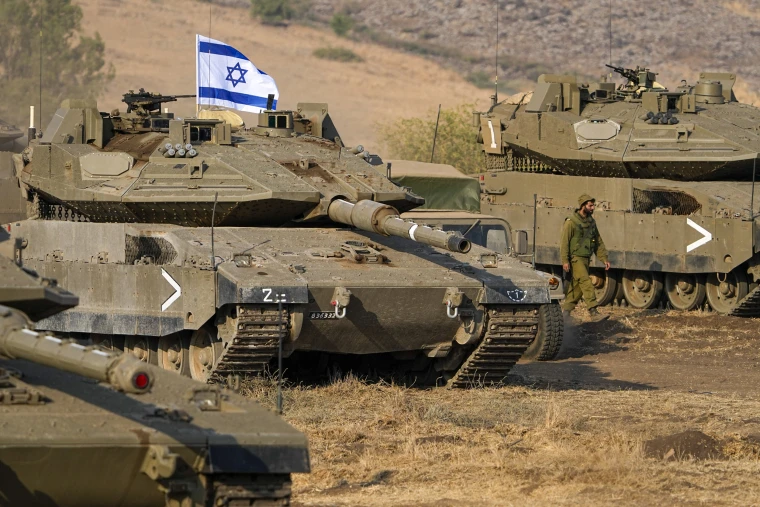Israel and Hezbollah now appear to be going towards an all-out war after months of escalating tension. The deadly pager, walkie talkie and other communication equipment blasts triggered by Israel across Lebanon last week seems to have been the beginning of a new era of modern warfare. The Iran-backed Hezbollah might have fired a barrage of over 100 rockets towards Israel targeting a military base near the city of Hafia but the new methodology of warfare has certainly changed the whole atmosphere globally. Israel’s brilliantly audacious bobby trapping of thousands of Hezbollah pagers, followed by the blowing up of that terror group’s walkie-talkies could be considered a stunning fillip for the Jewish nation. The Israelis have truly achieved what could be termed as a ‘surgical strike’. The elimination of terrorist leader Ibrahim Aqil by Israel forces, whose funeral took place today, is a sign of great but partial success in this war of nerves. But the most important lesson to be learnt by the world from this amazing success of Israel, no matter how partial it may seem later, is the act of virtually gouging out the eyes of thousands of Hezbollah combatants simultaneously who were spread over a large geographical area.
The pager blasts, reportedly, could be activated when the user puts the gadget near his eyes to open it to read the message. Those pagers were open-able, and thereby the confidential messages were readable, by the particular designated user only when the pre-scanned eyes (iris) of that combatant were in front of the screen. This is comparable to how iPhones, Samsung and some other phones, that can be programmed to open with facial recognition, operate. Some countries, like India for example, have achieved hundred percent coverage of their military and para-military forces under biometric-based registration systems. These countries have to be extra careful in this modern-day warfare situation. There will arise no need to ‘avoid clouds to remain invisible to enemy radars’ in future. The enemy might be lurking in the pockets (mobile phones) of every single Indian army, navy, air force, CISF and CRPF jawans and officers. The biometric-based Aadhaar card that the Gov’t of India has been insistent on using in every little activity, is issued after collecting iris scans of the holder.
Along with this, hospitals and dispensaries insisting on Aadhaar numbers to accompany all medical treatment of every single citizen who reaches out to them for help, are also storing various health-related data of the card holders. This dangerous move, that few if any Indians understand, is that any hacker can easily break into the humongous database of UIDAI and access all relevant information to make any modern communication or other such equipment burst on the face of the user. The whole world saw what modern warfare looks like as only 32 people were killed but thousands were blinded and disabled in two consecutive days of explosions across Lebanon. While Israel has not publicly acknowledged the intelligence operation that led to the simultaneous detonation of pagers and walkie-talkies, the incident has drawn attention to the country’s covert 8200 Cyber Warfare Unit.
Going way beyond the capabilities of the US National Security Agency and Britain’s GCHQ, Israel’s Unit 8200 is the largest military unit within the Israel Defence Forces (IDF) and traces its origins back to the early code-breaking and intelligence efforts established at the founding of Israel in 1948. However, following the IDF’s inability to prevent the 7 October attack on Israel, the unit’s reputation, along with that of the broader defense and security establishment, was immensely damaged. The gadgets were apparently rigged by Israel long back but were detonated only recently. This raises questions about the timing of the operation.
After international criticism of Israel due to its long-drawn battle to dismantle Hamas in Gaza, resulting in the deaths of over 40,000 predominantly Palestinian civilians, Israel’s Prime Minister Benjamin Netanyahu seems to have opted to shift the battleground to Lebanon to pre-empt a larger war on a second front. In order to maintain control over his Far-Right coalition partners, retain his position, and resist US pressure for what he considers an unacceptable resolution, Netanyahu had to show tangible results of the conflict to ease domestic pressure that was mounting on him to soften the war and negotiate for release of the remaining surviving hostages that were taken from Israel on the very first day of the war. The war in Gaza is now threatening to turn into a regional conflagration.
With the 7 November US presidential polls only weeks away, the focus of the White House seems to be to maintain status quo in the Middle East. And the future course of the war can only be determined after President Biden’s successor takes the helm in January 2025. Until then, it appears to be a field day for Netanyahu and his brave IDF.
